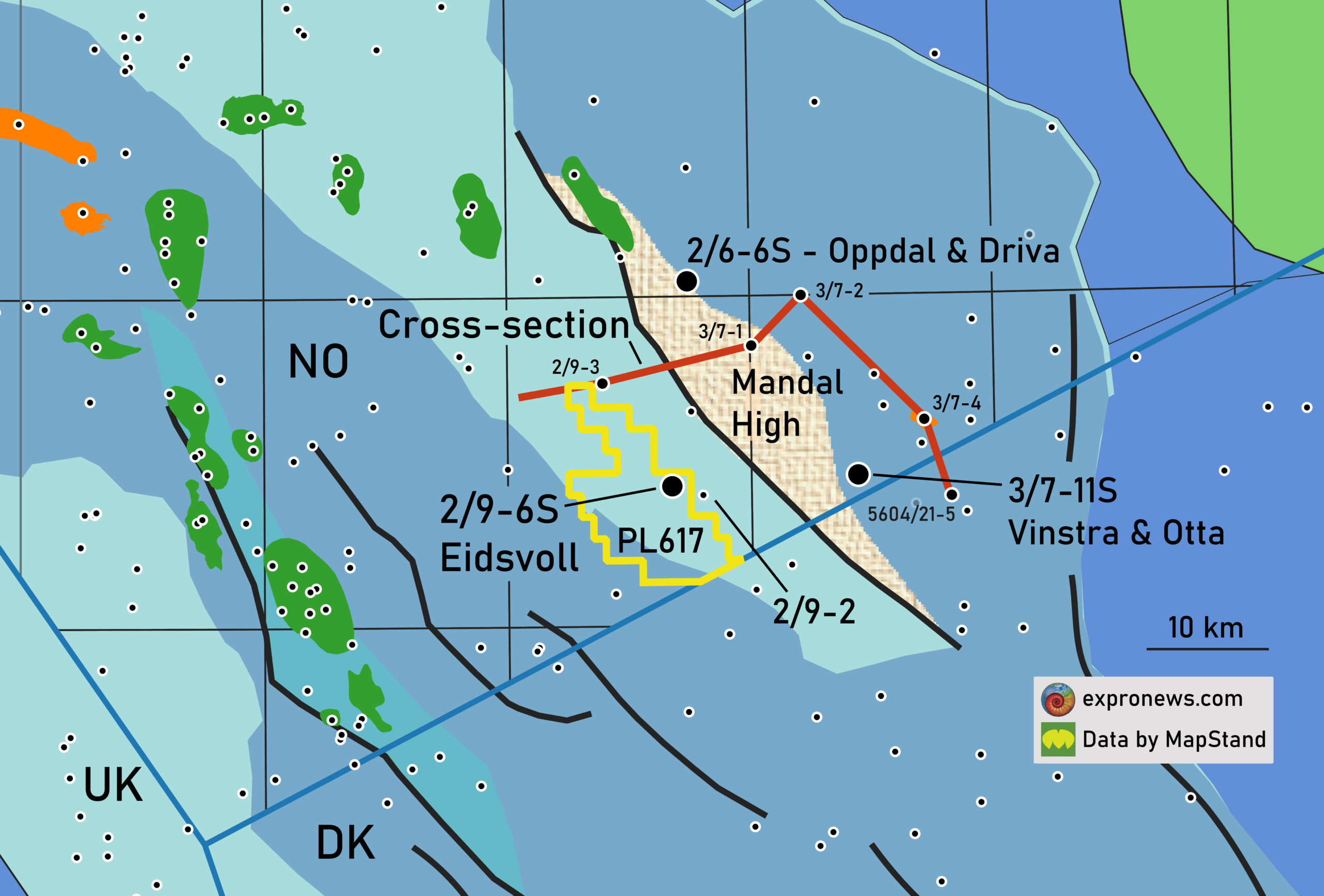Once dubbed as an area where a second Johan Sverdrup was to be found, Mol and partners embarked on an ambitious three-well exploration drilling programme a couple of years ago. With the third well now coming in dry, the area clearly has not lived up to its expectations. But, is it over? Quite a few wells were drilled on the Johan Sverdrup structure before the field was found.
Black shales
The objective of Mol’s third well (2/9-6S), that spudded in PL 617 on the 8th of January this year, was to prove petroleum in Upper Jurassic reservoir rocks (the Mandal Formation). As we already hypothesised in this article, reservoir presence was probably one of the key risks: nearby well 2/9-2, drilled in 1979 by Amoco, also targeted Upper Jurassic and found a 640 m section of black shales and no reservoir.
Reservoir present
With regards to reservoir presence, the outcome of 2/9-6S was more positive, as a 250 m sandstone “with claystone elements” was found in the Mandal Formation, of which 140 m was interpreted as being poor to moderate quality reservoir. Yet, even though traces of petroleum were registered in the upper part of the reservoir, the well that was drilled to a depth of 4250 m TVD has been classified as dry.
The fact that traces of hydrocarbons were reported may indicate that – as predicted by company Migris – the drilled section experienced migration of hydrocarbons. In turn, this suggests that the trap was either breached or non-existent and that hydrocarbons migrated further updip to the Mandal High.
Let’s now put the three Mol wells in a bit more context by projecting them onto a cross-section we adapted from an interesting publication by Anders Rossland et al. (2013) on the tectonostratigraphy of the Mandal High (see below). The map above shows the location of the wells and the seismic line. The Mol wells are indicated A, B and C.

Historical Mandal High drilling results not encouraging
The first thing that strikes the eye is that none of the three wells actually tested the Mandal High basement rocks itself, which would be expected if a Johan Sverdrup equivalent was being chased. The most likely reason why the High wasn’t drilled are the outcomes of earlier wells 2/6/5 and 3/7-1, which both drilled Upper Cretaceous Chalk overlying basement.
Although some reservoir within the Chalk was encountered, no hydrocarbons were detected in 3/7-1. Oil shows were observed in 2/6-5, both in the Upper Cretaceous as well as basement (resulting in a green oil field polygon on the map), but the Upper Cretaceous Tor Formation was tight and a DST only produced water with 3% oil after stimulation.
Based on these well results, it can be cautiously concluded that the top of the Mandal High is different from the Utsira High in that the former doesn’t seem to have been transgressed by Upper Jurassic sediments, which do form the main reservoir on the Utsira High.
Exploration around the Mandal High
Given that another three wells now also failed to prove hydrocarbons in areas around the Mandal High is not encouraging. As we already indicated in our recent article, the two wells to the east of the High may have been drilled in an area that never experienced hydrocarbon charge, as Upper Jurassic source rocks in the Søgne Basin are likely to be immature (as also pointed out by Rossland et al. (2013)).
Now that well 2/9-6S on the western margin of the High did prove reservoirs to be present but failed to discover commercial quantities of hydrocarbons may be the nail on the coffin for the area for a while, until someone comes along and challenges old ideas!
HENK KOMBRINK
Reference
A. Rossland, A. Escalona, and R. Rolfsen (2013). Permian–Holocene tectonostratigraphic evolution of the Mandal High, Central Graben, North Sea. AAPG Bulletin 97-6, 923-957.





